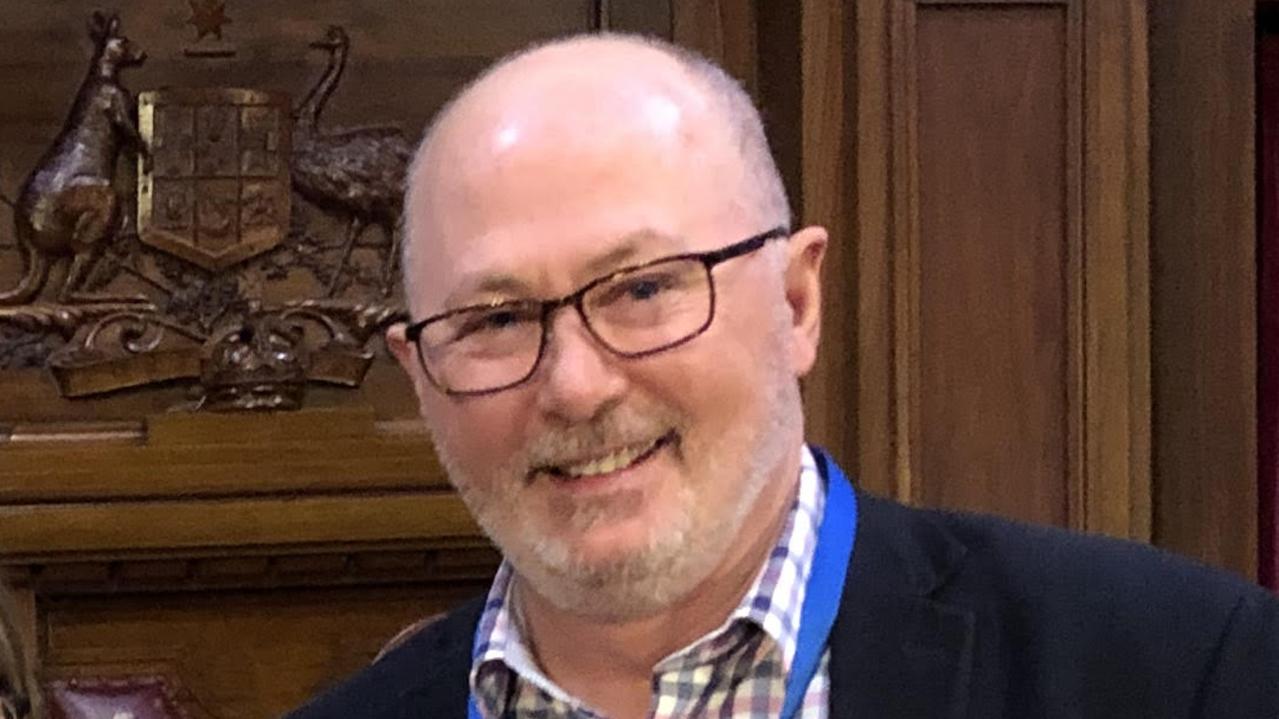Climate hysteria hits ‘peak stupid’ in hurricane season
Media climate hysteria has reached ‘peak stupid’ with this US hurricane season.

Media climate hysteria has reached “peak stupid” with this US hurricane season. In a week when Phillip Adams on ABC Radio National’s Late Night Live on Tuesday asked his US correspondent Bruce Shapiro if Florida Governor Rick Scott was a climate change denier for religious fundamentalist reasons, the left again showed its arrogance in declaring anyone who expressed the slightest doubt about the need to throw everything available economically at it must be thick.
Hey, but not lefty actress Jennifer Lawrence, who took thick to a whole new level with a rant about Hurricane Irma being nature’s revenge against President Donald Trump for pulling the US out of the Paris climate accord. She was yet another celebrity to take British environmental elder statesman James Lovelock’s Gaia theory to ridiculous levels.
How fantastic that James Delingpole from The Spectator published an interview with Lovelock on September 9. You see Lovelock has repudiated the whole nature’s payback story from his 2006 book The Revenge of Gaia.
The father of the environment movement says he hates wind energy, thinks it is a financial scam and is “modestly pro-shale gas”. He is strongly in favour of nuclear power generation and believes the dangers “have been grotesquely oversold by greens for reasons which have more to do with quasi-religious ideology than with science”.
Even The New York Times resisted the hurricane hysteria, publishing a piece by Henry Fountain on September 6 pointing out there was nothing particularly unusual about this US hurricane season.
If only the NYT’s Australian ideological cousins at The Age and The Sydney Morning Herald would take note. Fairfax environment editor Peter Hannam and regulars Peter FitzSimons and Jane Caro were sure the arrival of Hurricane Irma was all about man-made climate change and used the Gaia analogy to attack the government for trying to keep the lights on.
This paper’s environment editor, Graham Lloyd, stuck to the facts in a lengthy piece last Monday. Lloyd pointed out Irma had formed in a part of the Atlantic with unusually cool ocean surface temperature averaging 26.5C, about two degrees less than usual for such an intense storm.
He also skewered the latest bulletin from the Climate Council, led by palaeontologist climate activist Tim Flannery, titled: “Fingerprints of climate change all over Tropical Storm Harvey”. Climate Council chief executive Amanda McKenzie had claimed “climate change is now supercharging extreme weather events”.
Lloyd cited the latest scientific paper from the National Oceanic and Atmospheric Administration that concluded it was premature to suggest human activities had already had a detectable impact on Atlantic hurricane or global tropical cyclone activity.
Accept the science is the cry from green extremists, but they don’t really. This is the kind of fundamentalism Adams was mocking but it is usually found on his side of the argument. It is marked by a belief climate change is the most important issue on Earth and there should be no limit to the amount of money spent mitigating carbon, even if it drives our industries offshore and creates financial havoc for those who can no longer afford their power bills.
As The Australian’s national affairs editor Simon Benson wrote in this paper midweek, hundreds of coal-fired power stations are being built around the world. And the US may still meet its carbon commitments. It reduced 2015 emissions by 145 million tons, the largest annual decline anywhere ever. Not that it is being saved by renewables. No, it is gas from fracking that is driving down both energy prices and emissions.
Gas (33 per cent) has for the first time passed coal (32 per cent) as the primary fuel for power generation in the US. Renewables account for 15 per cent but half of that is hydro electricity. Wind accounts for 6 per cent and solar 1 per cent. The balance is nuclear. As recently as 1990 coal accounted for 60 per cent of US power.
The Greens and Labor here say coal is dead but when you factor in projects actually under way and those in scope, 1600 new coal-fired plants are planned worldwide. They also say coal is dead in China. It’s true about 100 new coal plants have been shelved, but the country is still opening two new plants a week. China struck a deal with Barack Obama at the Brisbane G20 meeting in 2015 to reach peak emissions in 2030. So it’s really coal business as usual.
India plans or is building 370 new coal plants. In Southeast Asia, 400 are in scope and 170 under way, including in the advanced countries of South Korea and Japan. Germany has had the same reliability problems with renewables as South Australia and is building more coal-fired power stations. Renewables account for a third of its power and it was targeting 40 per cent, but reliability issues are putting paid to that. So is there a message in all this for the Turnbull government? You bet.
While leading left-wing journalists at Fairfax Media, The Guardian and the ABC expressed dismay last week that Malcolm Turnbull was seeking to pressure AGL, owner of the Liddell power plant in the NSW Hunter Valley, to keep the plant open beyond its scheduled closure in 2022 or sell it to someone who would, there is every reason to believe the government is now getting close to a workable plan that could limit the cost of renewables, improve reliability threatened by the action of state Labor governments and peg prices to consumers, maybe even saving manufacturing jobs.
The latest action comes in the wake of the release a fortnight ago by Australian Energy Market Operator chief executive Audrey Zibelman of a report warning Australia was at risk of a serious shortfall in despatchable power: perhaps gas or hydro and theoretically battery power, but not solar and wind. At the rate South Australia is paying for Elon Musk’s 100 megawatt battery that won’t power that state in a crisis for more than a few minutes, I think no government with an eye on power prices will go there for a decade.
Now journalists are criticising Turnbull for what looks certain to be a winding back of the Finkel Report’s recommended 42 per cent renewables target by 2030. Clearly evidence of the damage done by the present 28 per cent target and the interests of their readers’ hip pockets play second fiddle to their green fundamentalism.
Mark Kenny, SMH national affairs editor, even suspected on Friday morning that Turnbull might be motivated by a political desire to damage “Blackout” Bill Shorten, Labor’s scourge of coalminers everywhere. God forbid.
Many journalists seem scandalised that Finkel might include so-called clean coal. They should read the work of US environmentalist Amory Lovins who has for more than a decade been showing US coal-fired power plants how to cut emissions by retrofitting cleaner production methods.
AEMO’s Zibelman told a hearing in Canberra on Thursday the answer to the despatchable problem might be a separate auction system for power that can be turned on and off quickly. Germany is going the same way. Get it? We need more reliability than wind and solar can provide.
Finally, brickbats to Sky News and the ABC for continuing to invite former opposition leader John Hewson on as a commentator on the power issue without declaring he has been a substantial investor in power technologies.




To join the conversation, please log in. Don't have an account? Register
Join the conversation, you are commenting as Logout